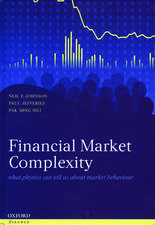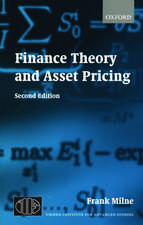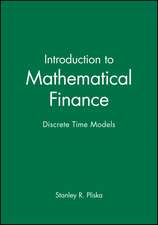Macroeconomic Risk Management Against Natural Disasters: Analysis focussed on governments in developing countries
Autor Stefan Hochrainer Cuvânt înainte de Prof. Dr. Georg Pflugen Limba Engleză Paperback – 8 dec 2006
Preț: 382.95 lei
Nou
Puncte Express: 574
Preț estimativ în valută:
73.28€ • 78.36$ • 61.10£
73.28€ • 78.36$ • 61.10£
Carte tipărită la comandă
Livrare economică 17 aprilie-01 mai
Preluare comenzi: 021 569.72.76
Specificații
ISBN-13: 9783835005945
ISBN-10: 3835005944
Pagini: 203
Ilustrații: XVI, 203 p.
Dimensiuni: 148 x 210 x 14 mm
Greutate: 0.3 kg
Ediția:2006
Editura: Deutscher Universitätsverlag
Colecția Deutscher Universitätsverlag
Locul publicării:Wiesbaden, Germany
ISBN-10: 3835005944
Pagini: 203
Ilustrații: XVI, 203 p.
Dimensiuni: 148 x 210 x 14 mm
Greutate: 0.3 kg
Ediția:2006
Editura: Deutscher Universitätsverlag
Colecția Deutscher Universitätsverlag
Locul publicării:Wiesbaden, Germany
Public țintă
ResearchCuprins
Natural disaster risk.- Economic impacts - Statistical analysis.- Natural disaster risk management measures.- Financial resilience of the public sector.- Catastrophe modeling and simulation.- Case Studies.- Conclusion and future work.
Notă biografică
Dr. Stefan Hochrainer promovierte bei o. Prof. Dr. Georg Pflug am Institut für Statistik und Decision Support Systems der Universität Wien. Er ist am International Institute for Applied System Analysis (IIASA), Laxenburg, tätig.
Textul de pe ultima copertă
Natural disasters cause considerable economic damage. While developed countries usually are able to cope with the impacts of natural hazards, developing countries are faced with severe consequences for their resources. In order to prevent long-term macroeconomic repercussions, governments need a comprehensive disaster risk management strategy.
Stefan Hochrainer develops a catastrophe risk management model. It illustrates which trade-offs and choices a country must make in managing economic risks due to natural disasters. Budgetary resources are allocated to pre-disaster risk management strategies to reduce the probability of financing gaps. The framework and model approach allows cross country comparisons as well as the assessment of financial vulnerability, macroeconomic risk, and risk management strategies. Three case studies demonstrate its flexibility and coherent approach.
Stefan Hochrainer develops a catastrophe risk management model. It illustrates which trade-offs and choices a country must make in managing economic risks due to natural disasters. Budgetary resources are allocated to pre-disaster risk management strategies to reduce the probability of financing gaps. The framework and model approach allows cross country comparisons as well as the assessment of financial vulnerability, macroeconomic risk, and risk management strategies. Three case studies demonstrate its flexibility and coherent approach.
















